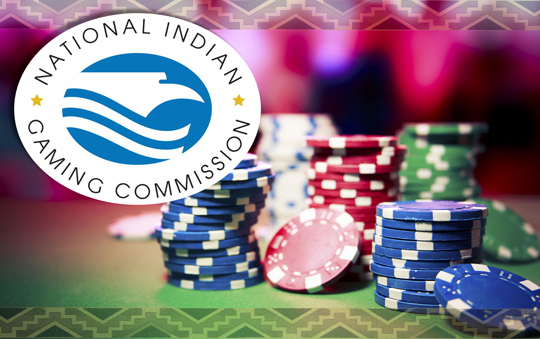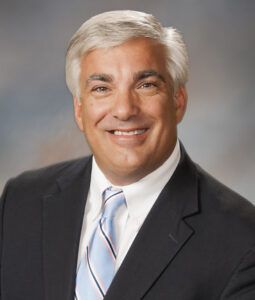
The establishment of the Indian Gaming Regulatory Act (IGRA) and the National Indian Gaming Commission (NIGC) set the stage for widespread tribal gaming across the U.S. More than three decades in, that industry has transformed a number of indigenous nations, in some cases lifting them from poverty to the halls of power and even global influence.
Looking back, the triumph of tribal gaming seems almost preordained. But it wasn’t a sure thing, especially in the early days. The road was strewn with obstacles: opposition from states and lawmakers, resistance from commercial operators, pushback from tribes themselves, and the dauntingly slow march of legislation at the federal level and in dozens of jurisdictions.
The NIGC was the hub around which it all turned.
Pre-IGRA
In the early days, tribal gaming in California consisted of bingo halls and poker rooms that generated money for reservation services.
“It didn’t take a lot of capital to get it going,” says attorney George
Forman, who would later represent the Morongo Band in the landmark Cabazon v. California case. “You could get a steel Butler building for $100,000 or so, buy a bunch of cheap chairs and tables and have a high-stakes bingo game. The business was relatively low-risk, but also quite profitable. And with it came a measure of economic self-sufficiency and the resource with which to diversify the tribal economy.”
As tribal gaming grew—from a handful of operations in 1980 to more than 100 by the middle of the decade—California lawmakers began to take notice. “The facts on the ground changed,” recalls Glenn Feldman, who argued the Cabazon case before the Supreme Court. “Tribal gaming wasn’t going away. On the contrary, it was expanding dramatically.”
In Riverside County, home of both the Cabazon and Morongo Bands of Mission Indians, police and SWAT teams raided tribal operations, sometimes masquerading as customers before drawing their guns. They shut down gaming halls, arrested tribal members and seized their cash. Together, the tribes sued, and a federal district court ruled in their favor, holding that neither the state nor the county had the authority to impose or enforce their gambling laws on the reservation.

The original members of the National Indian Gaming Commission
(l. to r.): Joel M. Frank, Jana McKeag and Chairman Tony Hope
Later that year, when the Supreme Court reviewed the case, “the conventional wisdom in Indian Country was that the high court would overturn the lower-court decision,” says Feldman.
In his argument, he impressed upon the justices the urgency of the case. “Until there’s a commercial market for sand and sagebrush, these two tribes don’t have anything to offer,” he said. “And gaming is the way in which they can begin to provide for their own economic needs.”
The court considered a longstanding argument against tribal gaming—that it would be infiltrated by organized crime—but the claim didn’t hold water, says Feldman, and “the tone of the argument gave me considerable hope that maybe we could win this thing.”
And win they did, in a groundbreaking, game-changing decision that opened the doors to economic self-sufficiency for tribes across the U.S. The Cabazon decision directly led to the formation of IGRA, and in turn to the NIGC.
Not everyone was happy—including some tribes. Ojibwe leader Roger Jourdain of Minnesota’s Red Lake Band of Chippewa, along with “red capitalist” Wendall Chino of New Mexico’s Mescalero Apache Nation, considered IGRA an affront to the concept of tribal sovereignty, because it gave states a say in tribal gaming. As proof, they cited the commerce clause of the U.S. Constitution, which said Congress had “no power to regulate commerce with foreign nations… and the Indian tribes.”
They had a point, and they took it to court. But ultimately, they lost the challenge.
“IGRA did not come from Indian Country,” noted Ernie Stevens, Jr., chairman of the National Indian Gaming Association, in remarks made in 2018. “The act was a compromise that sought to balance tribal, federal and state government interests.
“While Indian Country never appreciated the compromise, we’ve made it work for our governments, our communities and our people.”
Logjams, Bottlenecks & Legal Snafus
Though IGRA became law in October 1988, the first NIGC commissioners—Jana McKeag, Joel Frank, and Chairman Tony Hope, a former Mutual of Omaha vice president and son of entertainer Bob Hope—were not installed until 1990 and 1991. As McKeag remembers, “It was not a priority at the time, for the Congress or the Department of the Interior,” the federal government body charged with overseeing the commission.
The initial commission staff, about 12 strong, was shoehorned into offices at Interior, near the General Accounting Office. (The space was so cramped, McKeag remembers, Hope jokingly posted a sign in the window with the plea, “GAO, help us!” The staff later found roomier accommodations on M Street.)

“In meetings with everybody from AGs, Nevada resort owners and senators like Harry Reid, the NIGC was being asked to use the regulations as a weapon to suppress Indian gaming—limit it to bingo.” —Jana McKeag, former NIGC commissioner
Meanwhile, the forces that would fight the growth of tribal gaming were gathering. Nevada Senator Harry Reid faced pressure from constituents in Reno and Lake Tahoe to keep California gaming at bay. Richard Blumenthal, then Connecticut attorney general, “did all he could to suppress the growth of tribal gaming” in that state, says McKeag; later, as senator, he would fight a proposal to simplify federal recognition for other tribes.
Underlying it all was a prevailing, patronizing view of Indians: that they were incapable of managing their own affairs, and that any cash-rich tribal business would be easily overtaken by criminal elements.
“As day follows night,” says Feldman, “organized crime would be there, and the tribes would be incapable of running it. That was the thinking.”
In 2000, when New York state considered expanding tribal casinos in the Catskills, an ad campaign openly accused the St. Regis Mohawk Tribe of mob ties. Those ads, complete with images of drug syringes, asked: “Are these the new neighbors we want?” The campaign was funded by Atlantic City casino owner Donald Trump.
The Mashantucket Pequots’ compact negotiations with Connecticut was a fits-and-starts process that took years. Trump again weighed in, telling a congressional committee that Foxwoods would be “a disaster,” and “the biggest scandal since Al Capone.”
“At the end of his testimony, all our mouths were dropping,” recalls McKeag. “He ranted and raved about how (the Pequots) weren’t ‘real’ Indians, that they were going to bring in prostitutes, that the mafia was running the show. Trump was petrified that the Connecticut tribes would take business from his New Jersey casinos. Which they did.”
While Chairman Hope was not beloved by the tribes, behind closed doors, he was a champion for their rights and for the letter of the law as laid down in IGRA.
“In meetings with everybody from AGs to Nevada resort owners and senators like Harry Reid, the NIGC was being asked to use the regulations as a weapon to suppress Indian gaming—limit it to bingo,” McKeag remembers. “To this day I can see Tony’s face as he said, ‘But that’s not what the law says.’”
At one highly charged meeting at the Hart Senate Office Building, New Jersey Senator Robert Torricelli argued against tribal gaming on the grounds that it would destroy Indian culture and bring an unsavory element to the reservation. Also in the room: Arizona Senator John McCain and Hawaii Senator Daniel Inouye, both longtime advocates for tribes.
When Torricelli left, an outraged McCain exploded, shouting expletives that reportedly were heard up and down the hallways, until Inouye managed to calm him down.
The tenor of the times may have best been captured in a 2013 speech from Rick Hill, chairman emeritus of the National Indian Gaming Association. Hill said federal and state governments weren’t afraid of organized crime, “they were afraid of organized Indians.”
Class Wars
As tribal gaming grew, there were endless debates about the definition of Class II and Class III casino games. The distinction was critical: per IGRA, tribes needed to negotiate compacts with the states before they could offer Class III, Vegas-style games.

“States were against gaming until they were for it. If tribes were going to get gambling, they figured they might as well be a partner of some sort, work with the tribes rather than fight against them.” —James Maida, founder and president, Gaming Laboratories International
Decisions on classifications depended “on where you were in the country and what judge you got,” says James Maida, founder and president of Gaming Laboratories International (GLI). The testing lab worked with tribes in a number of states, starting with Minnesota, then Wisconsin, South Dakota, Louisiana, Oklahoma and so on across the country, testing and reviewing the games, based on the jurisdiction. Maida, who is also an attorney, consulted with tribal attorneys “to bridge the gap between technology and the law, so everybody kind of knew what they were getting into as they navigated their new compacts.
“The lawyers did the lawyering, and I talked them through the technology—what the state was proposing and what the tribes were trying to propose.”
IGRA included the requirement that states enter into “good faith” compact negotiations with tribes that wanted to offer Vegas-style gaming. But in the ongoing fight against the industry, some states simply ignored that mandate.
In 1991, the Seminole Tribe sued the state of Florida for its refusal to bargain. The tribe won in district court, but a court of appeals tossed the decision, citing Florida’s immunity from legal actions under the 11th Amendment. That ruling, according to one tribal attorney, effectively “neutered” IGRA’s good-faith clause, gave the advantage back to the states, and stymied the tribes.
Frustrated, many tribes decided to do an end run around the resistant state governments. “They basically said, ‘If you don’t want to negotiate, we’re going to just use Class II games, so we don’t have to split any money or revenue-share,’” says Maida. This was a language state lawmakers understood.
Florida and other states were “against gaming until they were for it,” Maida adds. “They became pragmatic. If tribes were going to get gambling, they figured they might as well be a partner of some sort, work with the tribes rather than fight against them.”
NIGC Now
Starting in the 1990s and over the past three decades, the NIGC has gone from an understaffed, overworked and sometimes overlooked agency to a mature body presiding over a powerhouse industry. It now employs some 100 legal staff, compliance officers, auditors, accountants, IT and security experts, occupying eight regional offices and the headquarters in Washington, D.C.

“Until there’s a commercial market for sand and sagebrush, these two tribes don’t have anything to offer. And gaming is the way in which they can begin to provide for their own economic needs.” —Glenn Feldman, attorney who argued the Cabazon case before the U.S. Supreme Court
Collectively, they monitor and support an industry that generated overall revenues of $34.6 billion in 2019. While 2020 was a different story—due to Covid-19, tribal casinos generated $27.8 billion, on par with 2012—things apparently rebounded in 2021; according to American Gaming Association research director David Forman, tribal gaming likely brought in $35 billion to $40 billion last year, and “there’s every indication” the industry has “had a strong recovery.”
Through the ups and downs, the NIGC, in keeping with its statutory responsibility and mission, “has made our training and our outreach broader, using virtual formats to make it more efficient,” says current Chairman
Sequoyah Simermeyer. It worked with other federal agencies, including the Centers for Disease Control and Prevention and the U.S. Department of Health and Human Services, on its pandemic response, working on a peer-to-peer basis to protect tribal operations and communities.
“Today, we have a strong focus in four areas,” says Simermeyer. According to the website, they include:
- Industry integrity. Protecting the valuable tool of Indian gaming that in many communities creates jobs, is the lifeblood for tribal programs, and creates opportunities for tribes to explore and strengthen relationships with neighbors.
- Agency accountability. Meeting the public’s expectation for administrative processes that uphold good governance practices and support efficient and effective decision-making to protect tribal assets.
- Preparedness. Promoting tribes’ capacity to plan for risks to tribal gaming assets including natural disaster threats, the need to modernize and enhance regulatory and gaming operation workforces, or public health and safety emergencies.
- Outreach. Cultivating opportunities for outreach to ensure well-informed Indian gaming policy development through diverse relationships, accessible resources, and government-to-government consultation.
“We’ve learned a lot over the last two years about the strength of tribal regulatory bodies, tribal lawmakers and operators working together, and the NIGC providing support and participating in that conversation,” says Simermeyer. “Today there are 500-plus operations and 248 licenses on Indian lands in 29 U.S. states.”
Tribal gaming has grown beyond the reservation to markets including Las Vegas, Atlantic City, and even Europe and Asia.
“The tribes are taking the expertise they’ve developed on the reservation and the resources they’ve been able to generate from on-reservation gaming,” says Feldman.
George Forman concurs. “Tribal gaming is the singular economic development approach in Indian Country that has truly worked. More than anything else, it’s made tribes an important part of our country’s fabric in ways they weren’t before. If not for the Cabazon v. California decision, there would not have been the Indian Gaming Regulatory Act. And without IGRA and the NIGC, you wouldn’t see what you see today in Indian Country—but not just in Indian Country. In California alone, tribes probably employ 50,000 or 60,000 people,” including many non-tribal members. “In their casinos, they generate billions of dollars in economic activity that extends far beyond the reservation boundaries.”
Building an economic pipeline “was a real challenge for tribes,” agrees
McKeag. “If we hadn’t done what was intended under the act, gaming tribes would still be doing bingo.”
Simermeyer adds, “It’s important to note that not all tribal communities have had the same level of success” as the Shakopee Mdewakanton, the Seminoles, the Mashantucket Pequots, the Mohegans and other industry leaders. “Some operations are modest. They are really focused on creating jobs and building the local regional economy”—just as they did at the dawn of tribal gaming.






